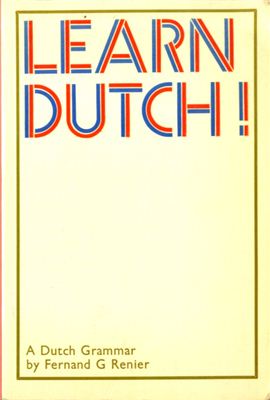Renier F. G. Lea Dutch! Ldn. : Routledge & Kegan Paul, 1976. -
182p.
FOREWORD TO THE SECOND EDITION
The method embodied in this work is based on the principle that the student must hear correctly before he attempts to pronounce correctly. Accuracy of hearing the sounds of the foreign language and the ability to differentiate between them, i.e. a full understanding of the sounds of the spoken word, should always precede any attempt to reproduce them. The pronunciation exercises and dictations are therefore meant to be heard by the student, not understood. Dictations consisting of known words only preclude the student from giving his whole attention to identifying the sounds and will cause him to listen by approximation only, depending on memory or recognition of known words. In the pronunciation exercises and dictations, the student is led to give his whole attention to the hearing and identification of the Dutch sounds — often purposely meaningless; in writing down what he has heard he will have to apply the rules of Dutch spelling that he has leaed.
The early part of this method is primarily based on phonetic teaching, but phonetic theory has been kept in the background. To teachers and students with a knowledge of phonetics, the Phonetic Appendix will be of use.
Adults and evening students are on the whole unfamiliar with formal grammar in that either they have never leaed it or they have forgotten it. Every point of grammar, therefore, is explained; in revising this method particular attention has been paid to the needs of students who are unable to attend a class or who wish to lea Dutch on their own.
Certain illustrations are intended to serve as a visual extension of the text. A number of the smaller illustrations depict scenes discussed in the lessons. Other more important illustrations depict scenes similar to those in the text to give the teacher scope to enlarge the lesson.
This revised edition embodies the findings of a number of years' teaching at the City of London College and the Regent Street Polytechnic. In general, revision has taken the forra of simplifying and clarifying certain points, e.g. word order, sentence structure and use of pronouns, and some useful elementary material has been added. The author wishes to express his thanks to the many colleagues and students who have made suggestions for increasing the usefulness of this method, and in particular to Dr. A. Huysinga of the University of London.
Feand G. Renier, London, 1960.
FOREWORD TO THE SECOND EDITION
The method embodied in this work is based on the principle that the student must hear correctly before he attempts to pronounce correctly. Accuracy of hearing the sounds of the foreign language and the ability to differentiate between them, i.e. a full understanding of the sounds of the spoken word, should always precede any attempt to reproduce them. The pronunciation exercises and dictations are therefore meant to be heard by the student, not understood. Dictations consisting of known words only preclude the student from giving his whole attention to identifying the sounds and will cause him to listen by approximation only, depending on memory or recognition of known words. In the pronunciation exercises and dictations, the student is led to give his whole attention to the hearing and identification of the Dutch sounds — often purposely meaningless; in writing down what he has heard he will have to apply the rules of Dutch spelling that he has leaed.
The early part of this method is primarily based on phonetic teaching, but phonetic theory has been kept in the background. To teachers and students with a knowledge of phonetics, the Phonetic Appendix will be of use.
Adults and evening students are on the whole unfamiliar with formal grammar in that either they have never leaed it or they have forgotten it. Every point of grammar, therefore, is explained; in revising this method particular attention has been paid to the needs of students who are unable to attend a class or who wish to lea Dutch on their own.
Certain illustrations are intended to serve as a visual extension of the text. A number of the smaller illustrations depict scenes discussed in the lessons. Other more important illustrations depict scenes similar to those in the text to give the teacher scope to enlarge the lesson.
This revised edition embodies the findings of a number of years' teaching at the City of London College and the Regent Street Polytechnic. In general, revision has taken the forra of simplifying and clarifying certain points, e.g. word order, sentence structure and use of pronouns, and some useful elementary material has been added. The author wishes to express his thanks to the many colleagues and students who have made suggestions for increasing the usefulness of this method, and in particular to Dr. A. Huysinga of the University of London.
Feand G. Renier, London, 1960.

